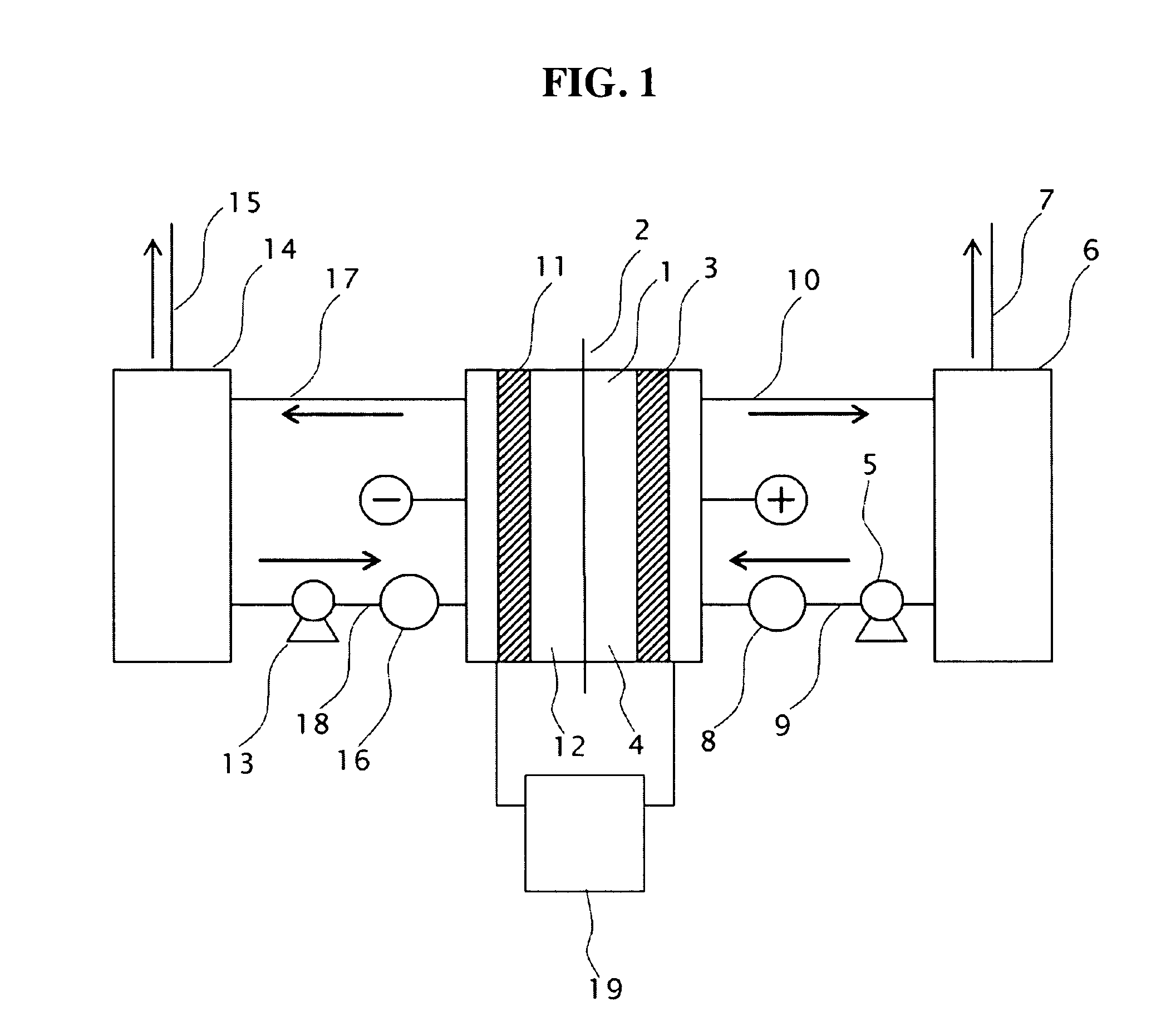Sulfuric acid electrolysis process
a technology of sulfuric acid and electrolysis process, which is applied in the direction of electrolysis process, electrolysis components, cells, etc., can solve the problems of difficult to liberate the generated gas from the electrode surface, the bubbles formed by the liberated gas in the electrolyte take time to diffuse, and the wash stripping efficiency of photoresist, etc., to achieve the effect of improving the electrolysis efficiency and reducing the cost of electrolysis
- Summary
- Abstract
- Description
- Claims
- Application Information
AI Technical Summary
Benefits of technology
Problems solved by technology
Method used
Image
Examples
example [UNK]
EXAMPLE 1˜6
[0076]The following gives an example of the operation method of the sulfuric acid electrolytic cell by the present invention.
[0077]Two electrodes with the conductive diamond film formed on 6-inch dia. silicon substrates were opposingly installed as anode 3 and cathode 11 with a porous PTFE diaphragm inserted in between. The gap between the electrode and the diaphragm was 6 mm, respectively both for the anode and the cathode to constitute an electrolytic cell, as described in FIG. 1, having an effective electrolysis area of 1 dm2.
[0078]Raw material sulfuric acid was stored in the anolyte tank 6 and the catholyte tank 14; sulfuric acid was supplied to the anode compartment 4 and the cathode compartment 12 of the electrolytic cell 1 at a given flow rate by the circulation pumps 5, 13 installed on the lines of the anode side and the cathode side; and electrolysis was performed with electric power supplied across the electrodes. The electrolytic current was supplied from the p...
PUM
| Property | Measurement | Unit |
|---|---|---|
| electrolytic current | aaaaa | aaaaa |
| current density | aaaaa | aaaaa |
| viscosity | aaaaa | aaaaa |
Abstract
Description
Claims
Application Information
 Login to View More
Login to View More - R&D
- Intellectual Property
- Life Sciences
- Materials
- Tech Scout
- Unparalleled Data Quality
- Higher Quality Content
- 60% Fewer Hallucinations
Browse by: Latest US Patents, China's latest patents, Technical Efficacy Thesaurus, Application Domain, Technology Topic, Popular Technical Reports.
© 2025 PatSnap. All rights reserved.Legal|Privacy policy|Modern Slavery Act Transparency Statement|Sitemap|About US| Contact US: help@patsnap.com


